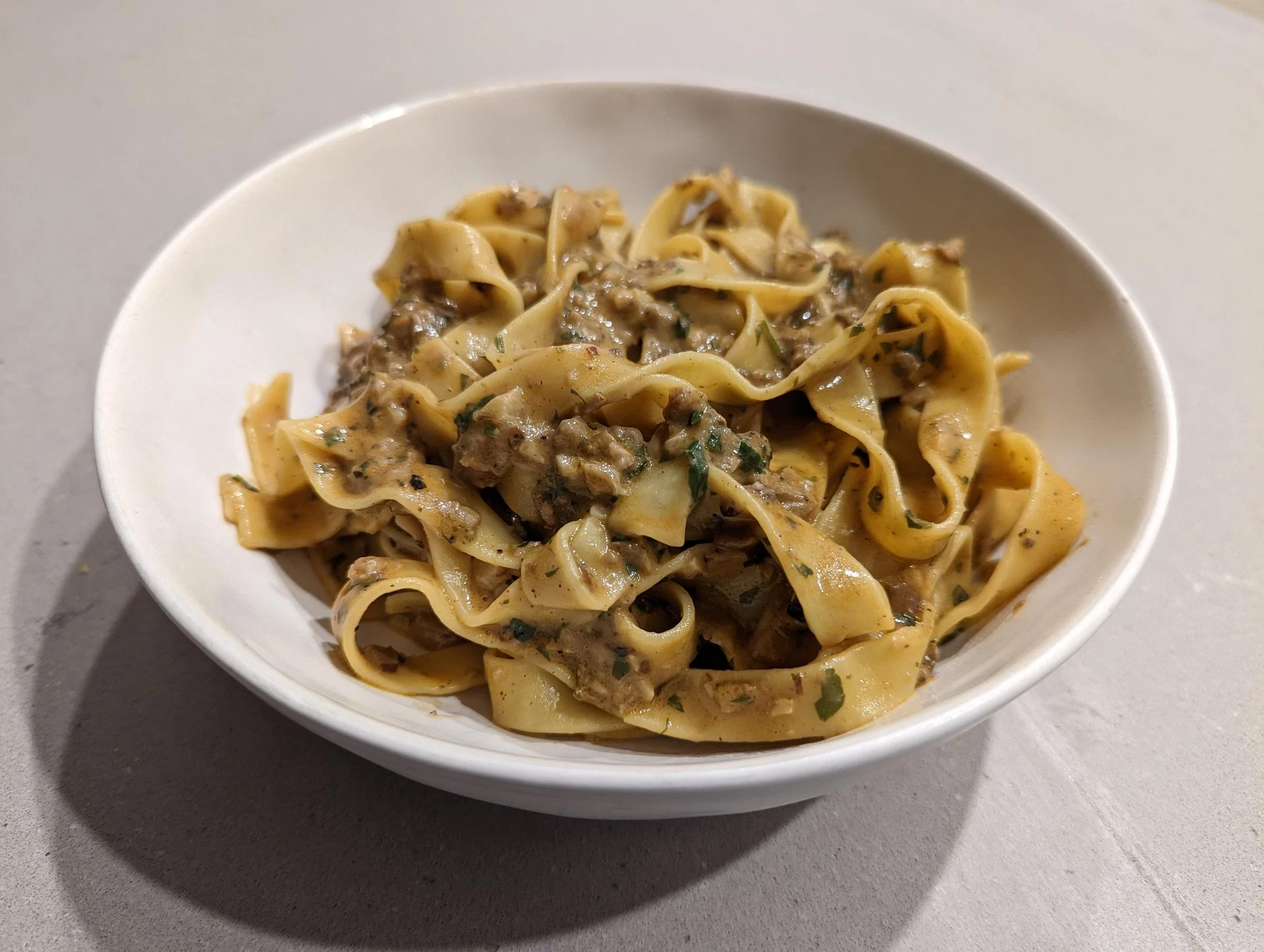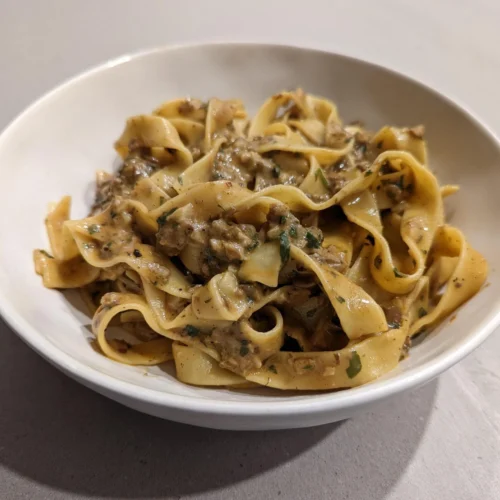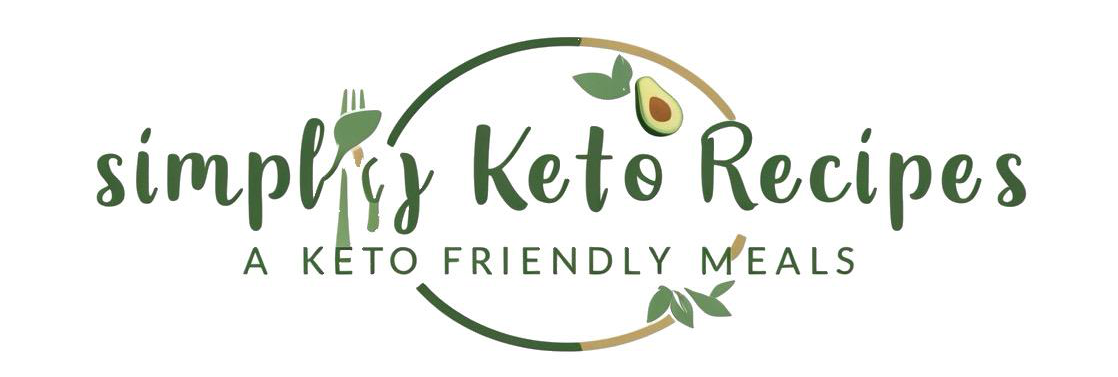When I first stumbled upon the keto diet, I was both intrigued and a bit intimidated. Cutting out carbs, especially pasta, seemed daunting. Pasta has always been a comfort food for me, a staple in my kitchen that I could whip up in no time.
Delicious and healthy keto pasta made with zucchini noodles and avocado sauce — a perfect low-carb meal.

However, as I delved deeper into the world of keto, I discovered that there are plenty of alternatives that can satisfy my cravings without derailing my dietary goals. The keto diet focuses on high-fat, moderate-protein, and very low-carb intake, which means traditional pasta made from wheat is off the table. But fear not!
There are numerous creative substitutes that can mimic the texture and taste of pasta while keeping your carb count low. One of my favorite alternatives is zucchini noodles, or “zoodles,” which I first tried at a local restaurant. I was pleasantly surprised by how well they absorbed flavors and how gratifying they were when tossed with a rich sauce.
Another option that has become a staple in my kitchen is shirataki noodles, made from konjac yam. These noodles are virtually calorie-free and have a unique texture that can be quite enjoyable when prepared correctly. As I experimented with these alternatives, I realized that making keto-friendly pasta at home could be both fun and rewarding, allowing me to indulge in my favorite dishes without the guilt.
Key Takeaways
- Allowing the keto-friendly pasta to cook too much can cause it to become mushy.Be sure to follow the recommended cooking time and test the pasta for doneness frequently.
- Using too much almond or coconut flour in the pasta dough can make it dry and crumbly. Follow the recipe measurements carefully and adjust as needed for the right consistency.
- Not allowing the pasta dough to rest before rolling it out can make it difficult to work with and result in uneven texture. Take a breather and let the dough sit for at least 30 minutes to ease the gluten.
- Adding too much sauce or heavy toppings to the keto-friendly pasta can increase the calorie and carb content, defeating the purpose of a keto-friendly meal. Use lighter sauces and toppings in moderation.
- Neglecting to properly store the leftover keto-friendly pasta can cause it to dry out and become unappetizing. Store the pasta in an airtight container in the refrigerator and reheat gently with a splash of water or broth to maintain its texture.
Essential Ingredients and Tools for Making Keto-Friendly Pasta
To embark on my journey of making keto-friendly pasta, I quickly learned that having the right ingredients and tools is crucial. The primary ingredient I found to be essential is almond flour. It’s low in carbs and high in healthy fats, making it a perfect base for pasta dough.
I remember the first time I used almond flour; I was amazed at how it transformed my cooking. Alongside almond flour, I also stock up on eggs, which act as a binding agent and add richness to the dough. These days, psyllium husk powder is a must-have ingredient.
This magical powder helps to give the pasta a more traditional texture and elasticity. In terms of tools, a good rolling pin is a must-have for flattening the dough to the desired thickness. I still recall the day I decided to invest in a pasta machine; it was a game-changer!
The machine allowed me to achieve uniform thickness and cut the pasta into various shapes with ease. Use a sharp knife or pizza cutter to slice dough into fettuccine or lasagna sheets. With these ingredients and tools at my disposal, I felt empowered to create delicious keto-friendly pasta right in my own kitchen.
Step-by-Step Instructions for Making Keto-Friendly Pasta from Scratch
Making keto-friendly pasta from scratch is an adventure that I thoroughly enjoy. The first step involves combining almond flour and psyllium husk powder in a bowl. I usually start with one cup of almond flour and one tablespoon of psyllium husk powder, mixing them well before adding two beaten eggs.
As I mix everything together, I can feel the dough starting to come together, but it often needs a little extra moisture. A splash of water or olive oil usually does the trick, and soon enough, I have a pliable dough that’s ready to be rolled out. Once the dough is formed, I dust my countertop with a bit of almond flour to prevent sticking and begin rolling it out with my trusty rolling pin.
I aim for about 1/8 inch thickness, which gives the pasta a nice bite when cooked. After rolling it out, I use my pasta machine to cut it into strips for fettuccine or sheets for lasagna. My first homemade pasta lasagna turned out amazing!
After boiling the pasta for just a few minutes, it was ready to be layered with my favorite fillings and sauces. The satisfaction of creating something so delicious from scratch is truly unmatched.
Creative and Delicious Keto-Friendly Pasta Recipes to Try
| Recipe Name | Main Ingredients | Calories per Serving | Net Carbs per Serving |
|---|---|---|---|
| Keto Carbonara | Shirataki noodles, bacon, eggs, parmesan cheese | 320 | 4g |
| Zucchini Noodles with Pesto | Zucchini, basil pesto, cherry tomatoes, pine nuts | 250 | 6g |
| Keto Alfredo with Palmini Pasta | Palmini pasta, heavy cream, butter, garlic, parmesan cheese | 280 | 3g |
| Spaghetti Squash with Meatballs | Spaghetti squash, ground beef, marinara sauce, mozzarella cheese | 310 | 7g |
Once I had mastered the art of making keto-friendly pasta, I couldn’t wait to experiment with different recipes. One of my go-to dishes is creamy garlic shrimp fettuccine. Succulent shrimp in garlic butter with homemade fettuccine and parmesan is divine.
Indulgent bites that fit my keto lifestyle. Another recipe that has become a family favorite is zucchini lasagna. Instead of traditional noodles, I use thinly sliced zucchini layered with ricotta cheese, marinara sauce, and mozzarella.
The first time I served this dish at a family gathering, everyone was shocked when I revealed it was low-carb! It’s amazing how versatile these keto-friendly pastas can be; they can easily adapt to various cuisines and flavors. From spicy Asian-inspired noodle dishes to comforting Italian classics, the possibilities are endless.
What are 5 common mistakes to avoid when making Keto-Friendly Pasta and their solutions?
As with any culinary endeavor, there are pitfalls to avoid when making keto-friendly pasta. One common mistake I’ve encountered is using too much liquid in the dough. When I first started experimenting, I added water liberally, thinking it would help bind everything together.
Instead, it resulted in a sticky mess that was impossible to work with! The solution is to add liquid gradually until you achieve the right consistency—less is often more. A common error is failing to let the dough rest before rolling it out.
Initially, I was too eager to get started and rolled out the dough immediately after mixing it. This led to pasta that was tough and chewy rather than tender. Now, I always let the dough rest for at least 30 minutes; this allows the psyllium husk to absorb moisture fully and improves the texture significantly.
A third mistake I’ve made is overcooking the pasta. It’s easy to forget that keto-friendly pasta cooks much faster than traditional varieties. The first time I boiled my homemade fettuccine, I left it in for too long and ended up with mushy noodles!
Now, I set a timer for just 2-3 minutes and keep an eye on them to ensure they maintain their perfect al dente texture. Additionally, not seasoning the water can lead to bland pasta. In my early attempts, I neglected this step and found my dishes lacking flavor.
Now, I always add salt to the boiling water before cooking my noodles; it makes a world of difference in enhancing the overall taste. In conclusion, employing inferior ingredients can negatively impact the final outcome. When I first started making keto pasta, I opted for cheaper almond flour without realizing that quality matters.
The texture and flavor were subpar compared to using high-quality almond flour from trusted brands. Investing in good ingredients has elevated my cooking experience immensely. With these tips in mind, I’m excited to continue exploring the world of keto-friendly pasta-making!
Each batch brings new opportunities for creativity and deliciousness while staying true to my dietary goals.
FAQs
What is the keto diet and why isn’t pasta keto-friendly?
The keto diet is a low-carb, high-fat diet that has been shown to help with weight loss and improve overall health. Pasta is not keto-friendly because it is high in carbohydrates, which can disrupt ketosis, the metabolic state the keto diet aims to achieve.
What are keto-friendly pasta alternatives?
Zucchini noodles (zoodles), spaghetti squash, shirataki noodles, and konjac noodles are some typical pasta replacements for the keto diet. These alternatives are lower in carbohydrates and can be used to create keto-friendly pasta dishes.
What are the essential ingredients and tools for making keto-friendly pasta at home?
Essential ingredients for making keto-friendly pasta at home include almond flour, coconut flour, psyllium husk powder, xanthan gum, and eggs. Tools such as a pasta maker or rolling pin, and a sharp knife are also essential for making keto-friendly pasta from scratch.
What are the common mistakes to avoid when making keto-friendly pasta?
Some common mistakes to avoid when making keto-friendly pasta include using the wrong type of flour, not allowing the dough to rest, rolling the dough too thin, overcooking the pasta, and not adding enough flavor to the pasta. Solutions to these mistakes include using the correct keto-friendly flours, allowing the dough to rest for the recommended time, rolling the dough to the appropriate thickness, considering the cooking duration, and incorporating tasty ingredients to elevate the flavor of the pasta.
What are some creative and delicious keto-friendly pasta recipes to try?
Explore some inventive and tasty keto pasta dishes like zoodle carbonara, creamy garlic shrimp with spaghetti squash, chicken alfredo using shirataki noodles, and zucchini noodles with pesto.These recipes offer a variety of flavors and textures while staying true to the keto diet.
What are some tips for making the perfect keto-friendly pasta from scratch?
Some tips for making the perfect keto-friendly pasta from scratch include using the right combination of keto-friendly flours, allowing the dough to rest, rolling the dough to the desired thickness, being mindful of cooking time, and experimenting with different flavors and sauces to enhance the overall dish.

The Ultimate Guide to Making Keto-Friendly Pasta at Home
Ingredients
Essential Ingredients for Keto-Friendly Pasta Dough:
- 1 cup Almond flour
- 2 Eggs
- 1 tbsp Psyllium husk powder
- Olive oil or water a splash, as needed
Keto-Friendly Pasta Alternatives & Recipe Ingredients
- Zucchini for "zoodles"
- 1 package Shirataki noodles 1 package, konjac-based
- 1 can Palmini pasta 1 can, hearts of palm-base
- 1 medium Spaghetti squash
- Bacon 4 slices, for carbonara
- ½ cup grated Parmesan cheese
- ¼ cup, Heavy cream for Alfredo sauce
- 2 tbsp Butter
- 2 cloves Garlic
- ½ cup Cherry tomatoes
- 2 tbsp Pine nuts
- 1 lb Ground beef for meatballs
- 1 cup Marinara sauce
- 1 cup Mozzarella cheese shredded
- 3 tbsp Basil pesto
- Salt to taste
Instructions
Mix dry ingredients:
- In a bowl, combine 1 cup almond flour and 1 tbsp psyllium husk powder. Mix thoroughly before adding 2 beaten eggs.
Form the dough
- Incorporate the eggs into the dry mixture. If the dough feels too dry, add a splash of water or olive oil until it reaches a pliable, workable consistency.
Roll out the dough
- Dust a clean surface with almond flour to prevent sticking. Use a rolling pin to flatten the dough to about 1/8 inch (3 mm) thickness.
Shape the pasta
- Run the dough through a pasta machine to create fettuccine strips or lasagna sheets. For lasagna, layer the sheets with your favorite fillings (e.g., low-carb marinara, ricotta, and mozzarella).
Cook the pasta
- Boil the pasta in salted water for 2–3 minutes (avoid overcooking to prevent mushiness). Drain and toss with a light sauce.
Final tip
- For keto lasagna, alternate layers of pasta, low-carb marinara sauce, ricotta, and mozzarella, then bake until the cheese is bubbly and golden.
